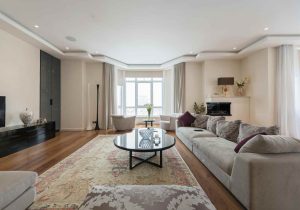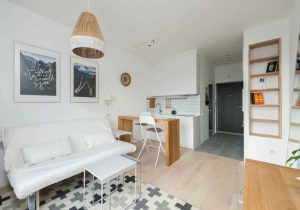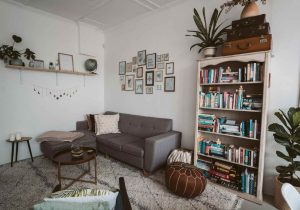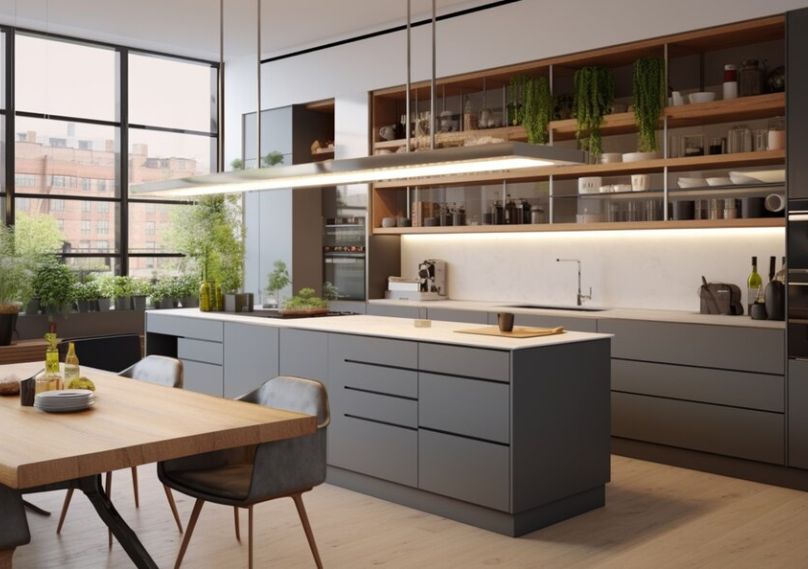Embellishing your home to reflect your personal style and taste doesn’t necessarily require a hefty investment. In fact, the essence of a truly stylish home often resides in the creativity and ingenuity with which you approach its design. Whether you’re gearing up to refresh a cozy corner or planning a full-scale redecoration of your home, achieving an aesthetically pleasing environment on a budget is entirely possible. Transform your living space into a sanctuary of elegance with stylish home interiors that reflect your personal flair.
From repurposing old furniture to redefine its charm, to strategically using bold colors to transform the mood of your rooms, each tip is designed to help you make significant visual impacts with minimal expenditure. We’ll dive into how you can mix high-end aspirations with budget-friendly solutions, creating a harmonious balance that speaks volumes of your decorating prowess.
These budget-savvy tricks will demonstrate how to harness the potential of upcycling, embrace the charm of vintage finds, and unleash the power of DIY projects to craft a space that not only looks curated and cohesive but also resonates with your unique identity.

Breathing new life into old furniture is not only a budget-friendly decorating solution but also a creative way to contribute to a sustainable lifestyle. Here’s how you can repurpose and re imagine your existing pieces to give them a fresh, new look:
Assess and Plan: Start by assessing the condition of the furniture you want to repurpose. Look for sturdy pieces with good bones. Consider the shape and size and imagine how it might look in a different color or with different hardware.
Clean and Prepare: Before you start any modifications, thoroughly clean the piece. Remove dust, dirt, and old paint or finish to ensure that any new applications adhere properly. Sanding might be necessary to smooth out rough edges and to help the new paint stick.
Painting: A new coat of paint can dramatically change the appearance of your furniture. Choose a color that complements your interior decor or adds a bold contrast. Use paints that are suitable for furniture and consider using a primer first if you are switching from a dark to a light color. Apply several thin coats, allowing ample drying time between each coat.
Updating Hardware: Changing the hardware is one of the easiest ways to modernize an old piece. Look for knobs, pulls, and handles that fit the existing holes or fill and drill new holes if you find a style you like better. Hardware comes in a wide range of styles and finishes, from sleek modern metals to vintage glass or ceramic.
Reupholstering: If the piece has fabric elements like a chair or sofa, reupholstering can be a transformative change. Choose a fabric that aligns with your current decor style. If you’re new to upholstering, consider simpler projects first, such as a dining chair seat or a small stool, before tackling more complex pieces like armchairs or sofas.
Adding Details: For an extra touch, add stencils, decals, or even a different painting technique like distressing or a faux finish. These details can add character and uniqueness to your piece.
Seal and Protect: Once you’ve completed your modifications, apply a sealant, if necessary, especially for pieces that will see a lot of use, like tables or chairs. This will help protect your work and ensure the longevity of your newly repurposed furniture.

Discover treasures at thrift stores, garage sales, and online marketplaces. Vintage pieces add unique character and are often well-made and affordable.
Know What You Need: Before you begin shopping, have a clear idea of what you need. Make a list of items that would enhance your home. Knowing what you’re looking for will help you stay focused and avoid impulse buys that don’t fit your space.
Research and Plan: Familiarise yourself with local thrift stores, flea markets, and the days when new stock typically arrives. Online platforms like eBay, Etsy, and Facebook Marketplace are excellent for finding secondhand items, especially if you’re looking for something specific. You can often search for items by location to avoid high shipping costs.
Early Bird Gets the Worm: Arriving early at a sale can give you a significant advantage. The best items usually sell quickly, so being one of the first to browse through newly added stock can make a difference.
Inspect Thoroughly: When you find an item of interest, inspect it carefully for any damage. Check for stability in furniture, wear and tear on fabrics, and functionality in decorative items. It’s important to know what can be easily fixed and what might be beyond repair.
Negotiate the Price: Don’t hesitate to negotiate, especially at garage sales and flea markets. Sellers are often willing to lower the price towards the end of the day or if they’re in a hurry to clear items. However, be respectful and reasonable with your offers.
Get creative with DIY projects that personalize your space. From wall art to custom shelving, homemade decor not only saves money but also adds a personal touch to your home.

Gather Inspiration: Start by collecting ideas. Pinterest, Instagram, and home decor blogs are great sources for DIY inspiration. Look for projects that match your skill level and the style of your home. Save images, tutorials, and videos that can guide your projects.
Plan Your Project: Once you’ve chosen a project, make a detailed plan. List the materials you’ll need, the tools required, and the steps you’ll follow. Planning helps prevent mid-project runs to the store, which can save time and money.
Reuse and Repurpose: Before purchasing new materials, see what you can reuse from around your home. Old wood can be turned into shelves, picture frames, or even art pieces. Fabric scraps can be used for patchwork throw pillows or tapestries.
Learn Basic Skills: Some basic skills can go a long way in DIY projects. Learning to paint, sew, or handle simple power tools can open up a wide range of possibilities. Many communities offer workshops, or you can find tutorials online.
Start Small: If you’re new to DIY, begin with small projects to build your confidence. For instance, you might start by making decorative candle holders or a simple wall hanging before tackling more complex projects like furniture or shelving.

Combine high and low elements. Invest in a few key pieces and balance them with more affordable items. This approach keeps the decor dynamic and budget-friendly.
Identify Key Investments: Decide which elements of your decor you’re willing to spend more on. These should be pieces that anchor the room, like a sofa, a dining table, or a bed. High-quality, durable items not only last longer but also elevate the overall feel of your space. For example, a luxurious leather sofa in the living room can serve as a centerpiece around which other elements revolve.
Find Affordable Accents: Complement your investment pieces with more affordable decor items. This could include throw pillows, wall art, and decorative accessories. Retailers like IKEA, Target, and HomeGoods offer stylish options at lower price points. For example, pair a high-end dining table with chairs from a thrift store that you repaint or reupholster to match your style.
Explore Different Sources: Mixing high and low effectively means shopping at a variety of places. Check out high-end furniture stores, mid-range outlets, thrift shops, and online marketplaces.
Play with Textures and Materials: Mixing different textures and materials can add depth and interest to your decor. Combine a sleek, modern metal coffee table with a plush, vintage rug. Or, set a smooth, glass vase on a roughly-hewn wooden shelf. These contrasts draw the eye and make the space more dynamic.
Use Colour to Unify: To make the mix of high and low items feel intentional, use color to tie everything together. Choose a consistent color palette that runs through both your high-end and budget-friendly items. This strategy creates harmony and flow throughout the space.
Creating a home that reflects your personal style and meets your comfort needs doesn’t have to be an extravagant affair. With the right strategies and a touch of creativity, you can design a space that feels both luxurious and inviting, all while staying within your budget. By embracing the art of repurposing, exploring secondhand treasures, undertaking DIY projects, and mastering the mix-and-match approach, you open up endless possibilities to enhance your living environment without breaking the bank.
As you journey through the process of transforming your dream home, remember that you’re not just decorating a house; you’re creating a home—a place where memories are made and stories begin. At Bonito Designs, we believe in the power of well-designed spaces to bring joy and function to everyday living. Our commitment to providing full-home interiors with an emphasis on both quality and aesthetics ensures that every corner of your home reflects your dreams and desires.
Let Bonito Designs help you create a space where every detail resonates with your personal style and every room welcomes you with warmth. Visit us today to learn more about our full-home interior solutions and start your journey to a more beautiful home. Your dream space is just a consultation away—Contact Bonito Designs to make it a reality!
